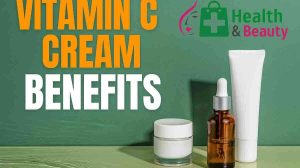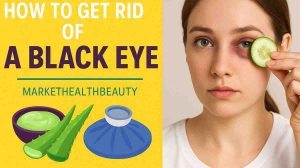Kids Skincare Routine—three words that once meant a splash of water and a smile in the mirror. Today, it’s a movement. In bathrooms across the world, children as young as eight line up bottles of cleanser, toner, and serum like soldiers ready for battle. The scent of cucumber mist fills the air; the glow of ring lights reflects in tiny eyes still learning multiplication tables. Their faces shine—not from innocence, but from retinol and salicylic acid, ingredients once reserved for adults chasing youth. What happened to childhood simplicity? When did skincare become a performance, not protection?
It began quietly, with one viral video. A preteen influencer unboxed her “morning glow routine” and millions watched. Suddenly, shelves once filled with crayons were replaced with creams. Parents smiled at first—“It’s harmless,” they said. But dermatologists whispered otherwise. Studies soon revealed that over 60% of tweens using multi-step routines suffered from dryness, redness, or early sensitivity. Pediatricians warned: children’s skin is thinner, its barrier still forming. The wrong care can do more harm than no care at all.
And yet, the industry thrives. The global market for children’s skincare grows nearly 7% every year, powered by hashtags, beauty hauls, and the illusion of control. In this world, skincare is no longer about health—it’s a badge of belonging. To many kids, the bathroom mirror has become the new social stage.
But beneath the shimmer and the scent lies a question too few are asking: how do we protect what’s still developing, both on the surface and beneath it? This is not just about lotions or labels—it’s about childhood itself. In the chapters ahead, we’ll uncover the science, the cultural pull, and the emotional truths behind the booming trend—and how to build a Kids Skincare Routine that nurtures rather than overwhelms.
Why a proper kids care routine matters
When we talk about a Kids Skincare Routine, it’s not simply a scaled-down adult version. Children’s skin differs biologically from that of teens and adults. The skin’s barrier function is still developing, the surface area relative to body size is greater, and young pores may respond differently to active treatments.
Marketing data shows that the baby and child skincare sector is projected to grow about 6–7 percent per year globally. This boom means more product choices—and more risks. Studies of tween and teen skincare routines reveal alarming patterns: multiple products, expensive regimens, and lack of sunscreen.
Why does this matter? Because the wrong ingredients or excessive layering can disrupt the skin barrier and damage confidence. Pediatric dermatologists warn that young skin is still developing its tolerance to outside exposures, so it’s more likely to react to strong ingredients. A proper routine for kids isn’t “adult minus some steps”—it’s a thoughtful plan made for young, sensitive skin.
Many children today are adopting complex routines that far exceed what young skin actually needs. According to a reputable pediatric dermatology guide, skipping fragrance-heavy formulations and sticking to a gentle cleanser, lightweight moisturizer and daily sunscreen is the safest path. Read more about what specialists recommend here: Children’s Health – What parents need to know about skincare for kids. This kind of expert-backed resource helps demonstrate why simplicity wins when establishing a solid children’s skin-care routine.
The 7 shocking mistakes parents make (and how to avoid them)
Mistake 1: Jumping straight into multi-step adult routines
Influencer culture promotes elaborate steps and multiple active products. Overuse of strong actives such as retinol or acids can lead to irritation and thinning of the barrier. Instead, start with three essentials: a gentle cleanser, light moisturizer, and broad-spectrum sunscreen. Add other products only after professional advice.
Mistake 2: Skipping sunscreen
Sunscreen often feels optional, but it’s the most vital protection. Early sunburns increase the lifetime risk of skin damage. Make sunscreen non-negotiable—SPF 30 or higher every day, even when cloudy.
Mistake 3: Using products with fragrance or dyes
Bright colors and scents attract kids, yet these are common allergens. Heavy fragrance, dyes, and essential oils can cause irritation. Choose gentle, fragrance-free, dermatologist-tested formulas instead.
Mistake 4: Treating skincare as fashion or status
Social media has turned skincare into an aesthetic rather than health. When routine becomes about appearance, children may feel pressured or anxious. Reframe Kids Skincare Routine as hygiene and self-care, not beauty competition.
Mistake 5: Ignoring patch tests and skin reactions
Excitement over new products makes children skip patch tests. Always test new formulas behind the ear or on the wrist for 24 hours before full use.
Mistake 6: Not tailoring routine by age or skin type
A one-size-fits-all approach fails. A product for oily teen skin may dry out a younger child’s normal skin. For ages 6–10, keep it minimal; ages 10–13 can start basic oil control if necessary; teens can add acne-care with supervision.
Mistake 7: Focusing on treatments, not fundamentals
Many routines chase “miracle serums” but forget the basics. True skin health begins with cleansing, moisturizing, and daily sun protection.
How to build a smart kids skincare routine
Step 1: Gentle cleansing
Use a mild, non-foaming, fragrance-free cleanser once or twice a day. Teach kids to rinse with lukewarm water and pat the skin dry gently.
Step 2: Light moisturizing
Most children don’t need heavy creams. For dry or cold climates, pick a light moisturizer containing ceramides or glycerin. Apply at night or to dry patches.
Step 3: Daily sunscreen
Sunscreen is the core of every Kids Skincare Routine. Use SPF 30+ with zinc oxide or titanium dioxide. Reapply every two hours if outdoors.
Step 4: Healthy habits
Encourage hydration, enough sleep, clean pillowcases, and balanced diet. Teach “hands off the face” to prevent irritation or infection.
Step 5: Add treatments cautiously
Introduce active ingredients like niacinamide or mild salicylic acid only after consulting a dermatologist. Avoid strong exfoliants and retinoids.
Age-appropriate guide
| Age Range | Core Steps | Notes |
|---|---|---|
| 6–10 years | Cleanser (evening) + Sunscreen (daily) | Moisturizer only for dryness |
| 10–13 years | Cleanser (morning & night) + Sunscreen + Moisturizer | Teach gentle application |
| 14+ years | Add mild treatment for oil/acne | Avoid adult-only actives |
What to look for in products
Safe ingredients
Ceramides, glycerin, hyaluronic acid, zinc oxide, titanium dioxide. Always choose fragrance-free and non-comedogenic.
Ingredients to avoid
Retinol, strong acids, essential oils, and anything labeled “anti-aging.” Avoid multi-active layering; it overwhelms sensitive skin.
Quick checklist
Dermatologist-tested? Fragrance-free? Alcohol-free? Broad-spectrum SPF? Simple packaging, minimal claims—function over fashion.
Teaching kids the right skincare mindset
- Lead by example—children mimic parents.
- Make it fun—turn sunscreen into a “superhero shield.”
- Explain the why—sunlight, pollution, hygiene.
- Limit social media that pushes luxury routines.
- Encourage questions about reactions.
- Celebrate natural skin and self-confidence.
- Set budgets—simple products work better than expensive hype.
When to see a dermatologist
If a child has chronic redness, irritation, or acne-like breakouts, consult a specialist. A dermatologist can adjust the Kids Skincare Routine safely and prevent long-term damage.
Real-life case study
Maya, a 12-year-old girl, followed viral “glass skin” videos and began using multiple exfoliants. Within weeks her cheeks turned red and itchy. After a pediatric dermatologist visit, she returned to a simple routine: gentle cleanser, light moisturizer, and SPF 50. In two weeks, her skin healed, and her confidence returned. Her mother now calls it “the three-step miracle.”
Final Thoughts
A balanced Kids Skincare Routine is not about glamour—it’s about care, education, and protection. When parents simplify routines and focus on healthy habits, children learn that skincare is self-respect, not self-comparison.
Build the foundation: cleanse, moisturize, protect, rest, and teach. The glow that follows isn’t from serums—it’s from confidence, balance, and love.







